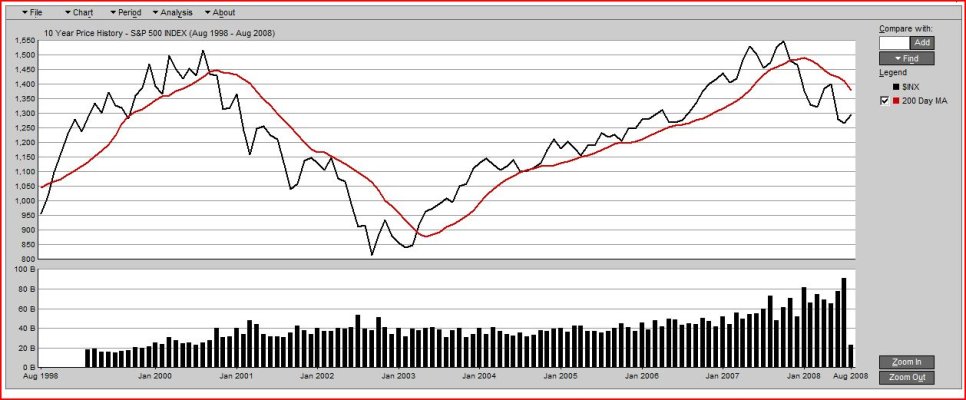If you think about it, breaking a 200 day MA does not necessarily mean we're in the midst of a strong trending downturn. Suppose the market is treading water for quite awhile -- then it takes very little to pierce a moving average.
OK, so maybe now we have a reasonable percentage change causing the event. Ha, now we can do the historical analysis and come up with some trading rules. You could check the data trying various rules like only sell if market is down more the X% and pierces the Y day MA. Then you need another rule to get back in. All you need to do is check the market back a few decades and see which will work. Unfortuneately, it may not work the next time. Also, if you invest in a slice/dice or perhaps tilt to value or have lots of international stock exposure can you really use such rules based on one index? Maybe you need a few more indexes, and on and on and on ....
BTW, I use to do some of this so feel I'm qualified to say it isn't too smart

. All this looks really appealing until you get whipsawed or miss a market turn.
CFB, my hat's off to you on the 2000-2002 trading but personally I don't think this market has the wild look of the large growth 2000 bubble -- on the other hand it has other factors that make it worriesome. I rebalanced 3 weeks ago and will stick with my stock allocation but will not rebalance into stocks unless we get a really nasty decline.
Les

 . All this looks really appealing until you get whipsawed or miss a market turn.
. All this looks really appealing until you get whipsawed or miss a market turn.
